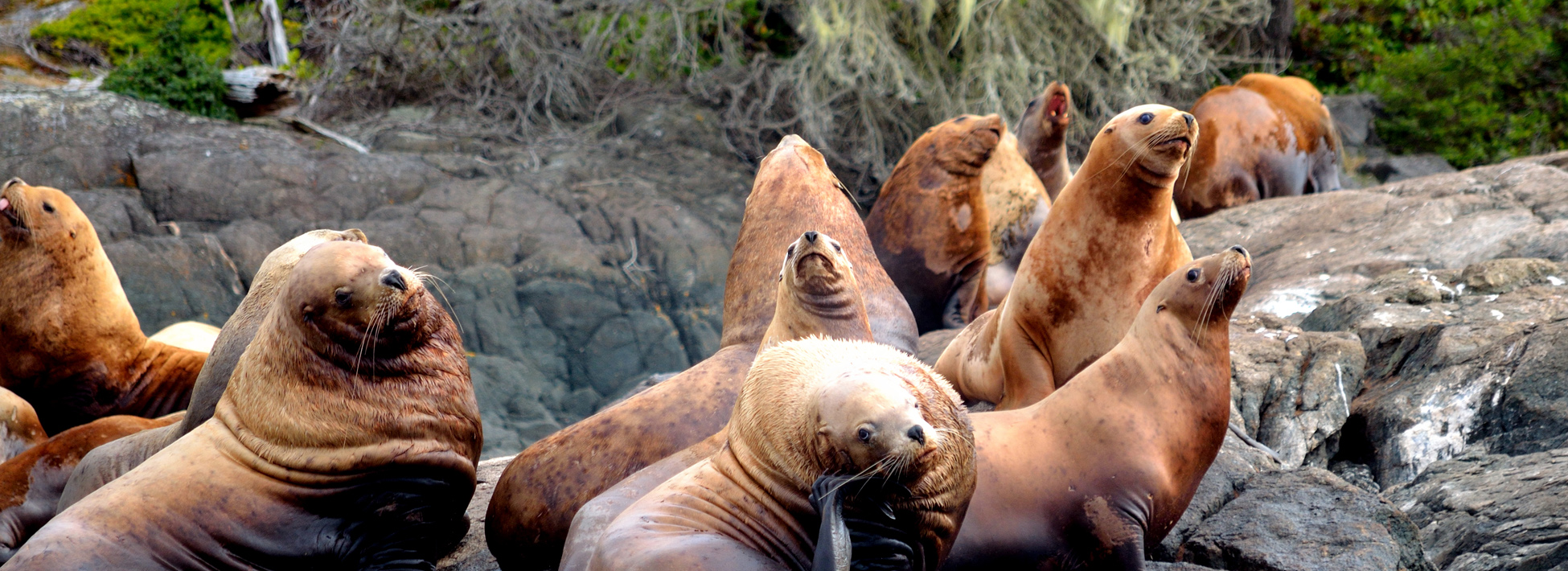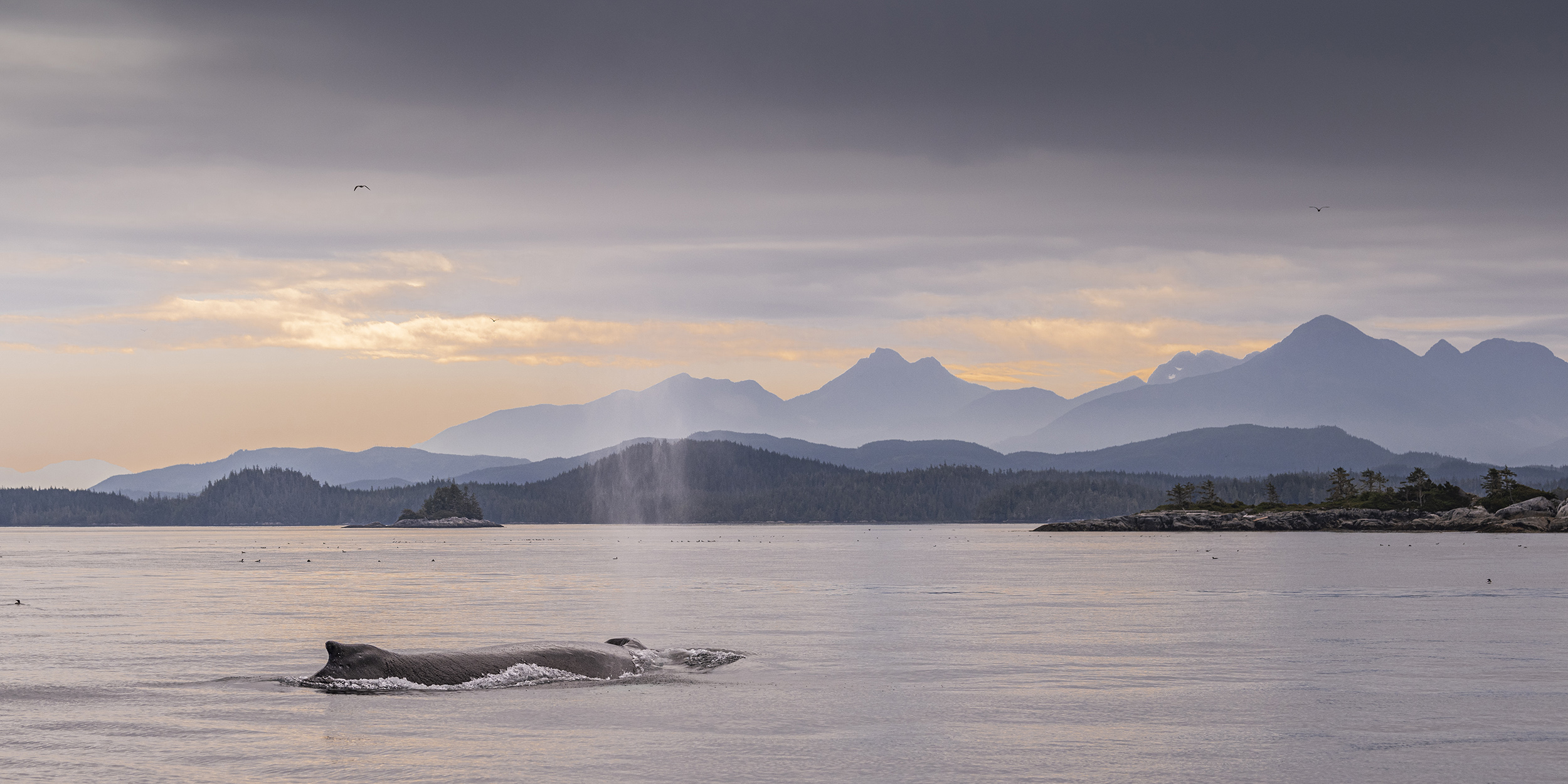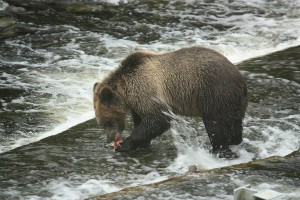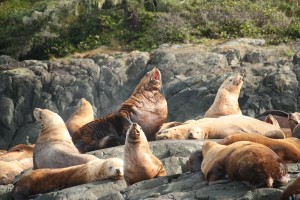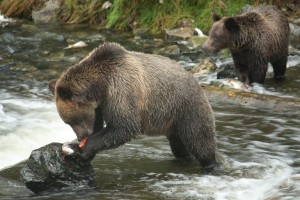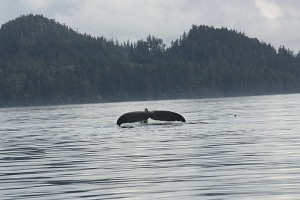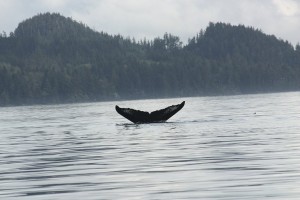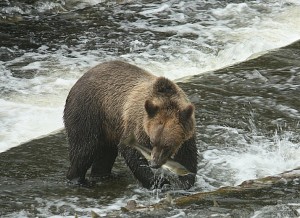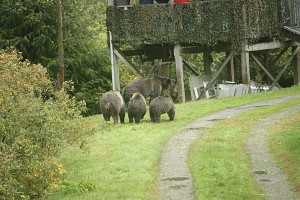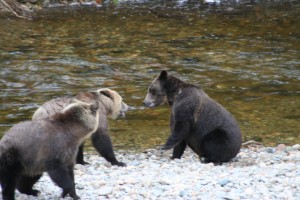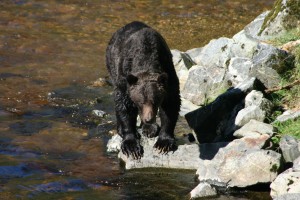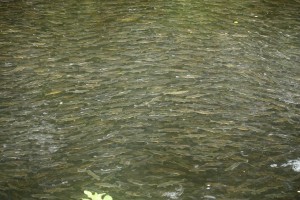 The reason the grizzly bears travel over a hundred miles through the Great Bear Rainforest of BC to the area of the Glendale River is the number of pink or humpy salmon that return each year to the man-made spawning channel. This photo by Lynn Morris shows the abundance of the salmon during the peak of the run. The travel distance was documented about ten years ago when ten bears were fitted with radio (GPS) collars to determine their den area to see if proposed logging would do any harm.
The reason the grizzly bears travel over a hundred miles through the Great Bear Rainforest of BC to the area of the Glendale River is the number of pink or humpy salmon that return each year to the man-made spawning channel. This photo by Lynn Morris shows the abundance of the salmon during the peak of the run. The travel distance was documented about ten years ago when ten bears were fitted with radio (GPS) collars to determine their den area to see if proposed logging would do any harm.
